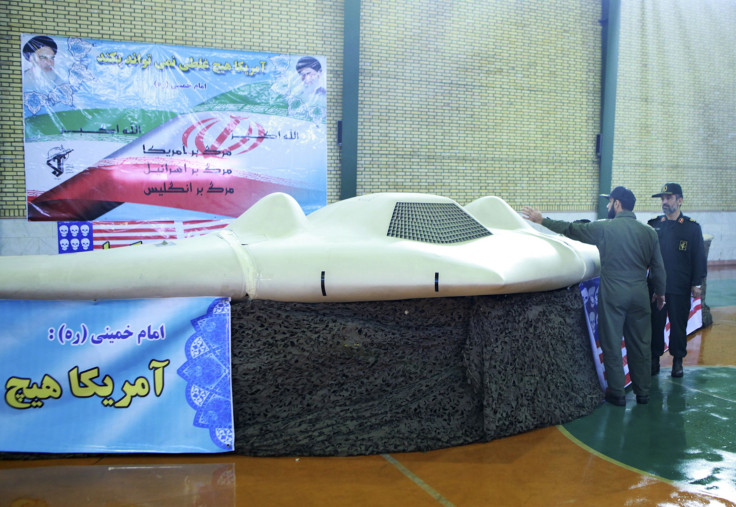Iran Shows Off New Stealth Drone, Reversed-Engineered From Captured US UAV: Report

Iran's state-controlled television broadcast a video of a new stealth drone Wednesday that was reportedly reverse-engineered from a captured 2011 U.S. unmanned aerial vehicle, UAV, the Associated Press reported. The footage follows a report from the state-run Islamic Republic News Agency, IRNA, announcing a test flight of the drone.
In December 2011, Iran captured a U.S. RQ-170 stealth drone. The RQ-170, known as the Sentinel and developed by Lockheed Martin's Skunk Works division, is used for reconnaissance missions, but the U.S. Air Force has released few details of the UAV's capabilities or purpose in Afghanistan and Iran, Popular Science reported. The "Beast of Kandahar" was also rumored to have provided support for U.S. Navy SEAL Team 6's mission to assassinate Osama bin Laden in May 2011.
The Sentinel drone accidently crossed into Iranian airspace and was reportedly downed over the city of Kashmar, around 140 miles from the border of Afghanistan, by Iran's electronic warfare unit on Dec. 4, 2011. The captured drone was reverse-engineered by the Islamic Revolution Guards Corps, IRNA reported. The footage showed a black drone flying over mountains and landing at an airbase. Despite its capture, the U.S. said security measures within the drone would prevent Iran from gathering data from the RQ-170, Reuters reported.
"The Iranian version's weight has remarkably become less, it consumes less fuel, its speed has been increased, and the duration that it can fly has improved a lot because of its enhanced body. The Americans had used metal in building the body but we did not use metal at all. It helps to reduce its detectability by radars" Amir Ali Hajizadeh, Islamic Revolution Guards Corps brigadier general and head of the aerospace division, was quoted by the AP as saying on Iran state television. Gen. Hajizadeh said Iran could develop three drones by March 20 with mass production to follow, the AP reported.
With Iran touting the new technology, some aviation experts are skeptical of the country's claims. The Aviationist noted some inconstancies with the landing portion of the vehicle, but did say the flying portion looked credible.
© Copyright IBTimes 2024. All rights reserved.






















